Page updated: 28 May 2014
 The
Upper Moulding
The
Upper Moulding
Unlike the hull moulding, the superstructure is strengthened at various points, with either plywood boards or balsa infill moulded into the glass fibre.
For example, in all but the Pyecraft boats, the entire cabin roof is of sandwich construction. In the left hand picture, below, the edge of the infill can be made out where it meets the sides of the cabin. Other reinforcement points include the shroud anchorage and the forward part of the foredeck around the main anchor cleat.
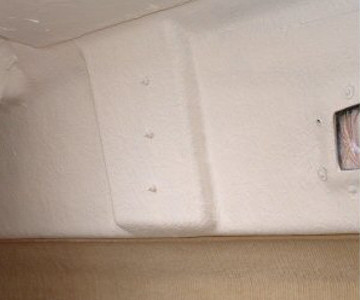
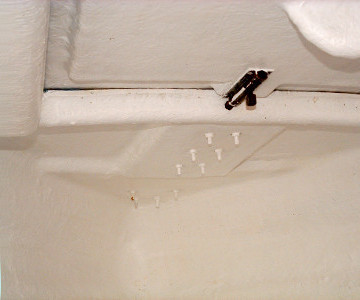
In Pyecraft boats the cabin roof does not have the sandwich construction. Instead, grooves that form the ledges on the outside, to which hand rails are fixed, can be clearly seen in a photograph of a Pyecraft boat:

In various areas boats have different levels of reinforcement. One of these is under the fore deck where the cabin begins to rise. Some boats have substantial knees glassed in while others do not. There is no obvious reason for this difference. Both two and four berth boats may or may not have them and date of manufacture does not appear to be a factor.

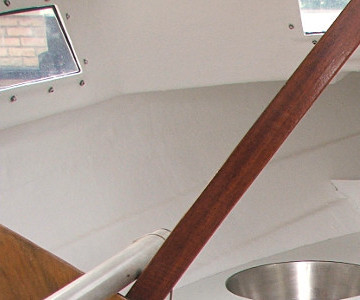
Another area where differences occur is under the cockpit seating. Currently, it appears that the double strip is only seen in early Reedcraft boats. The second strip ceased to be installed at the time when encapsulated ballast started to be fitted. The illustrations on the left below shows an early Reedcraft boat, while the one on the right is later (#267). Moore's boats have different bulkhead and cockpit locker arrangements at the foot of the berth.


Pyecraft Boats have no reinforcing strips under the cockpit seating at all. It is also notable that reinforcement is reduced in the cockpit sole in Pyecraft boats. The cockpit sole of all Reedcraft and Moore's boats is of full sandwich construction, echoing that of the cabin roof. However, in the Pyecraft boats this is reduced to some cross braces, shallower but wider than than those moulded into the cockpit seating of the earlier boats:
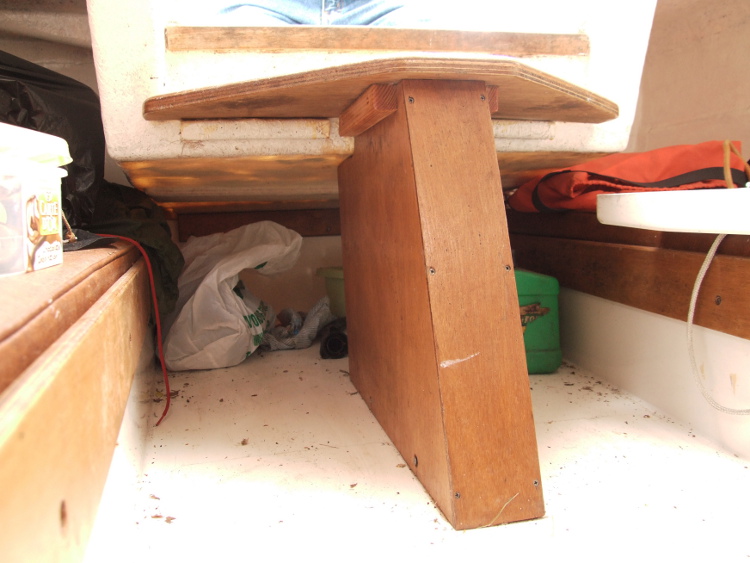
Apart from the daylight visible through the cockpit sole, also noticeable in the photograph of the Pyecraft boat above, is the wooden casing to the keel housing. This is topped with a plywood threshold strip that is much thinner than the solid mahogany threshold of earlier boats. It is also set lower than in the earlier boats requiring a wooden capping strip across the bottom of the doorway.
A number of additional internal mouldings may be fitted to SeaHawks. These are discussed on the Cabin Options page, while external differences are described on the Above Decks page
 Mast Bracing
Mast Bracing
The final significant area of construction are the two methods used to support the base of the mast. Most two-berth boats have bracing struts rising from what many consider to be rather intrusive, bulkheads leading up to a wooden plate.

In the alternative version, used on all four-berth and some two-berth boats, the bulkheads maybe reduced to virtually nothing and sturdier struts, in association with a laminated wooden beam moulded into the cabin roof, are used, described in a technical drawing (532kb). This approach appears to strengthen the cabin roof considerably while also providing a much more open feel to the cabin.

The photograph below shows the struts and beam of another boat. On all Reedcraft and Moore's boats where this method of mast bracing used, it will be seen that the bracing struts are embedded into the roof beam. This is not the case in Pyecraft boats, where not only are the struts surface mounted but also are a thinner plywood (See the photograph above.) and not the 5/8ths inch solid mahogany, specified in the early drawings.
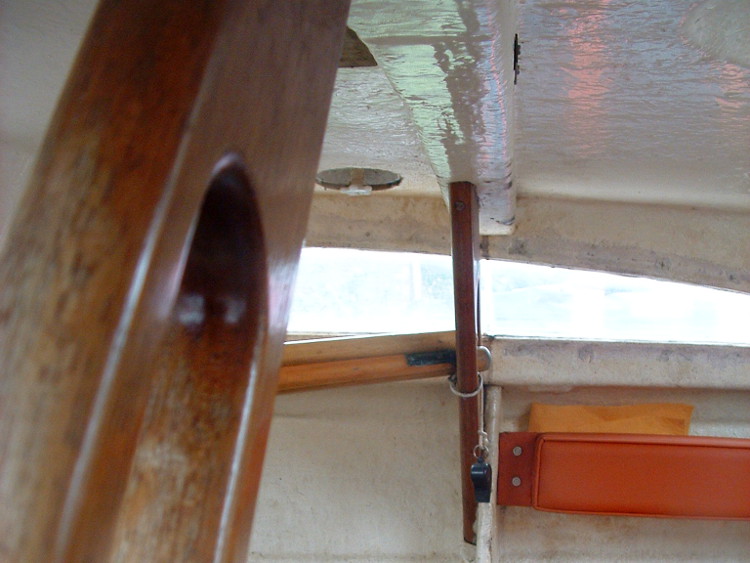
Both types of bracing, long thin struts and bulkheads and short heavyweight struts with beam, are designed to take the lateral stresses on the mast step. Fore and aft stress is handled by the substantial plank of wood moulded into the upper surface of the cabin roof, on which the mast sits. In the photograph of the two-berth boat (above) the end of the plank can be seen just protruding into the area where the roof rises to form the cabin door.
A number of owners of traditional two-berth boats have redesigned the mast bracing arrangements to given their cabins a more open feel. Some of these are reported in the Owners Section of the site.
